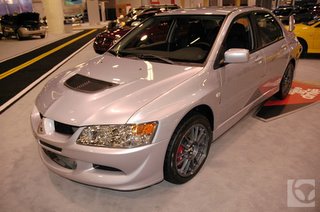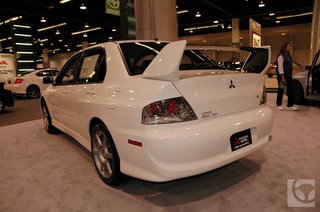Your Cars Electrical System
 When the automotive industry was in its infancy, it used electricity only to ignite the fuel inside the engine. By the late 1920's, the electric starter replaced the hand crank, electric headlights made acetylene lamps obsolete and the sound of the electric horn drowned out the toot of the hand operated air horn. Today, a car uses an extensive electrical system just to produce, store, and distribute all the electricity it requires to allow it to run smoothly and offer the driver the comfort he now expects.
When the automotive industry was in its infancy, it used electricity only to ignite the fuel inside the engine. By the late 1920's, the electric starter replaced the hand crank, electric headlights made acetylene lamps obsolete and the sound of the electric horn drowned out the toot of the hand operated air horn. Today, a car uses an extensive electrical system just to produce, store, and distribute all the electricity it requires to allow it to run smoothly and offer the driver the comfort he now expects.The Car Battery
The first major component in the car electrical system is the battery. The battery is used to store power for starting, and for running auxiliary devices such as clocks, radios and alarms when the engine is off. Another major component is the starter motor, which is used to start the engine (obviously). The third component is a charging device powered by the engine, known as the car alternator. This devices powers the electrical system , and charges the battery, but only when the car is running. With these basic components, the car maintains its supply of electricity. The voltage regulator keeps the voltage at the correct level and the power level stabilised, and the fuse box ensures that any minor electrical faults do not develop into major problems such as damaged components, or even worse, an electrical fire.
Many different auxiliary electrical devices are used in modern cars, such as: radios, cellular phones, rear window defrosters and electric door locks, as well as a vast array of motors powering everything from the moon roof on down.
Common Car Electrical Problems:
The battery is usually the first part of the system to develop a problem. Most batteries last between 3 and 7 years depending on brand and design. Batteries can be working perfectly one minute, and dead the next. More on this later.
Blown car fuse:
If one part of the electrical system not working like the interior lights or dash lights, then the first thing to check is the fuses. Check for the fuse panel under the dash, in the glove box, or maybe even in the engine compartment in some more modern cars. Most fuse boxes will be labeled with a circuit diagram. Modern cars use a blade type fuse which is rectangular in shape and transparent. Look for the wire, which runs through the fuse, and see if it has burned through. Any discoloring of the fuse is a good indication that the fuse has blown. If you are in any doubt, replace with a new fuse and test the system which is not working.
The Cars Alternator:
Does your car start ok, but your headlights become dim when idling? It could be a bad alternator. When the alternator cannot produce enough electricity to keep the electrical systems running and the battery will have to be used to take up the slack. This will eventually wear down the battery and not allow your car to start.
Troubleshooting your Cars Electrical System:
There is no tougher a system to troubleshoot on your car than the charging/starting system. This is due to the fact that there are a large number of things that can go wrong and it's difficult to test some components without special equipment. Let's go over some possible situations and their possible causes.
Car won't start, all I hear is a click but the engine does not turn.
- First check all battery cables for corrosion as this will keep power from flowing freely to the starting system. If they are dirty, clean with a wire brush and reattach. Apply a light coat of grease to the top of the terminals to prevent further corrosion.
- Battery could not have enough power stored in it to spin the engine. This can be caused by a bad cell in the battery or from a bad alternator not charging the battery when the engine is running. If you can get the car to a mechanic, have him or her test the battery and charging system with a special tester. This tester places a load on the battery and can tell the condition. They can also check to see if the alternator is working to it's full potential.
- Starter or solenoid could be bad. If you can not jump start the car and all of the battery cables are ok then suspect the starter.
Car won't start, I hear nothing.
- Check battery cables as above.
- Have the battery tested. There could be a bad cell causing a short. You can try jump-starting but often the car will not stay running.
Car won't start, all I hear is a horrible grinding noise.
Grinding noises point to the starter not properly meshing with the flywheel. This can be caused by a bad solenoid or a bad spot on the flywheel.
I have also seen starters loosen up so they no longer contact the flywheel at the proper distance. While not common, it is something to keep in mind.
Car starts but my headlights are dim at low engine speeds.
- Look to the alternator for problems. Take the car to your mechanic to have the alternator checked for proper operation.
- Check for loose wires going to the alternator. Also check for corrosion, as this will inhibit the alternator from charging properly.
- Check the tension on the alternator belt. If it is too loose, the belt may slip and not drive the alternator properly
As you can see there are plenty of things to go wrong with the charging system and it is always best to take the car to your mechanic and have it tested before you go replacing parts blindly.
Preventing problems with your car's electrical system:
- Replace your battery every 4 years as a safety measure. It will save allot of headaches down the road.
- If your battery is not a sealed unit, check fluid levels in each cell. Only fill with distilled water and be careful around the acid, which is in the battery.
- Check your alternator belt frequently for cracks and tension. Replace per your cars manufacturers recommendations.
- Clean your battery connections at least once a year. Car stores sell a handy terminal cleaner which is basically a round metal wire brush, which works great. Once you re-attach the terminals, coat them with a layer of heavy grease or special purpose grease sold at car stores. This layer will block the air from reacting with the connectors and creating corrosion.
How to jump start your car:
Jump-starting your car is not a difficult task. First lay out the cables on the ground between the two cars. Make sure that the cable is not twisted or tangled and none of the end clamps are touching each other. You should make sure that the car with the good battery is running.
Step 1: Take the positive (red) clamp closest to the car with the good battery and hook it to the positive terminal of that car. The positive terminal will have a + sign on it and usually a red wire running to it.
Step 2: Repeat this step on the car with the bad battery, hooking up the positive clamp to the positive terminal on the battery. Make sure the clamps are contacting well and can not fall off.
Step 3: Take the negative cable (black) closest to the car with the good battery and hook it to the negative terminal of the battery. The negative terminal will have a - sign and usually a black wire running to it.
Step 4: This is the last step and the most important. Take the negative clamp closest to the car with the bad battery and attach it to a bare metal part of the engine. DO NOT hook it to the battery negative terminal as there maybe hydrogen gas present from the battery and a spark from the connection could cause an explosion.
That's it...... turn the key on the dead car and the car should start. If it does not, try revving the engine on the good car to boost the pwer coming from the alternator. If this does not work, try wiggling the cables to assure you have a good connection. GOOD sets of jumper cables are a necessity. I have had cheaper sets not jump-start a dead car. I actually had to double up two cheap sets to get enough current to start my car. The cheaper sets will have thinner cables, which have a higher electrical resistance and cannot carry enough current to start some stalled cars. I would suggest buying a cable, which has 4,6 or 8-gauge wire.













